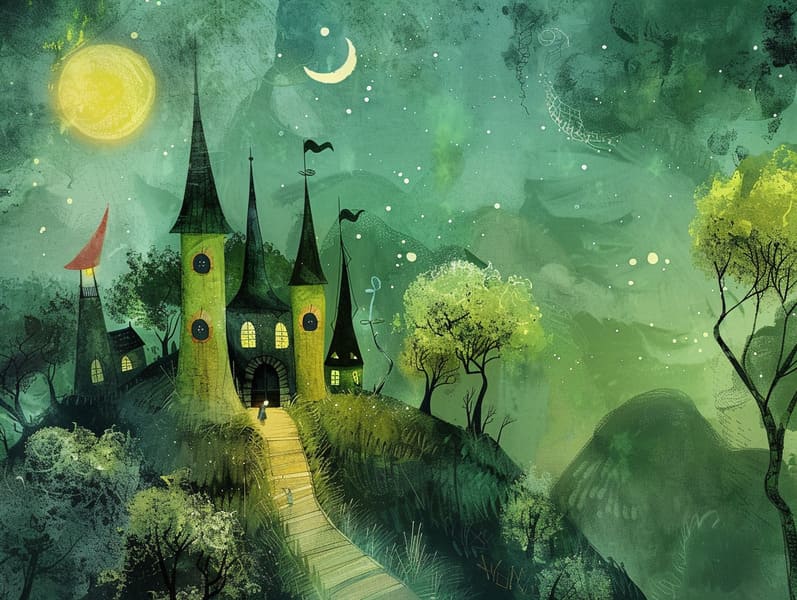
Timeless fairy tales have timeless appeal. These stories have been narrated from one generation to the next millennia before they were ever written down. They came from a variety of cultures, including African traditions. They were initially narrated among elders, often carrying themes and messages reflective of the societal norms and beliefs of the time.
Jacob and Wilhelm Grimm, the two Grimm brothers, were among the first to collect many of these beloved stories. Their anthology, "Grimm's Fables," included classics like "The Little Glass Slipper," "Hansel and Grethel," and "The True Story of Snow White," which have since become cornerstones in the world of classic fairy tales. Similarly, Andersen's imaginative tales, such as "The Story of the Little Mermaid," and "The Little Duckling," have stolen hearts worldwide, solidifying their place in the pantheon of classic fairy tales.
Despite their ancient origins, these tales remain as important as ever, especially as children's night stories. These delightful tales are now available in diverse formats, including vibrantly illustrated books, captivating animations, and internet fairy tales.
Their lasting presence can be connected to several delightful features:
Valuable Lessons: Timeless fairy tales often impart important moral lessons. Fairy tales like "The Shepherd Boy and the Wolf" teach the benefit of truthfulness, while "The Tortoise and the Hare" highlight the qualities of persistence and unpretentiousness. These stories offer young ones clear distinctions between good and bad, molding their moral compass in a gentle yet deep way.
Empathy and Understanding: Traditional fairy tales frequently feature protagonists facing obstacles and hardships, inspiring listeners to resonate with their struggles and back their triumphs. For instance, "Beauty's Beast" emphasizes the virtue of looking beyond appearances to understand the true being of a soul, promoting empathy and awareness.
Cultural Awareness: Many old fairy tales are rooted in the cultural contexts from which they blossomed. Engaging with these narratives can provide fascinating glimpses into different ways of life, strengthening a sense of global understanding and awareness.
Inventiveness and Fantasy: The mythical elements in traditional fairy tales—wizardry and magic—activate children’s visions and dreams. These stories bring readers to supernatural realms, triggering innovative dreams and a sense of delight that persists a lifetime.
Ancient fairy tales are not only delightful but also educational. They work as alluring tools in enhancing various brain and heart skills in kids. When classic fairy tales are recited, they nurture speaking abilities by introducing new lexicon and sophisticated sentence structures. This practice also promotes hearing abilities and attention, as young ones remain attentive, keen to see what happens next.
Furthermore, analyzing the themes and characters of ancient fairy tales can promote logical thinking and reasoning skills. The young are guided to detect patterns, anticipate outcomes, and understand cause and effect. These discussions also aid young readers articulate their thoughts and feelings, strengthening their emotional intelligence.
In today’s online age, the prevalence of digital fairy tales has made these fairy tales more attainable than ever. Internet resources and web apps extend large libraries of old fairy tales that can be viewed or played anytime, anywhere. Fairy tales spoken are particularly common, supplying an charming way for little ones to immerse in these alluring stories. Audio stories and read-out-loud videos bring characters and settings check it out to life, often accompanied by enchanting audio effects and music that amplify the narrative experience.
The lasting allure of timeless fairy tales lies in their ability to shift to present days while sustaining their core values. Contemporary reimaginings of these narratives often spotlight more inclusive protagonists and modern settings, making them relevant to today’s audience. However, the essential messages of heroism, charity, and fairness remain unchanged, continuing to affect readers of all ages.
Classic fairy tales also offer a sense of peace and understanding. They put forth a well-arranged narrative with a plain beginning, middle, and end, often closing with the resolution of conflicts and the triumph of truth over falsehood. This predictability can be calming for little ones, presenting a sense of sturdiness in an ever-changing world.
Traditional fairy tales continue to allure and teach new generations, maintaining their grace and importance in modern society. As nighttime stories for kids, they deliver up a perfect blend of captivation and insight, furthering moral values, empathy, and creativity. The presence of digital fairy tales and the sought after status of fairy tales read aloud promise that these ancient stories remain available to new generations.
By defending and communicating these fairy tales, we continue to value the rich tapestry of legends and cultural heritage. Whether you are browsing a artistically illustrated book, delving into a internet collection, or listening on an audiobook, the magic of children's fairy tales is always within reach. These tales teach us of the lasting impact of stories and its ability to unify us across time and space.
Whether you are accessing a beautifully illustrated book, experiencing a online collection, or playing an spoken story, the fascination of children's fairy tales is always within reach.
These narratives demonstrate of the enduring strength of storytelling and its ability to bring us together across epochs and places, casting a charm that delights and instructs alike.